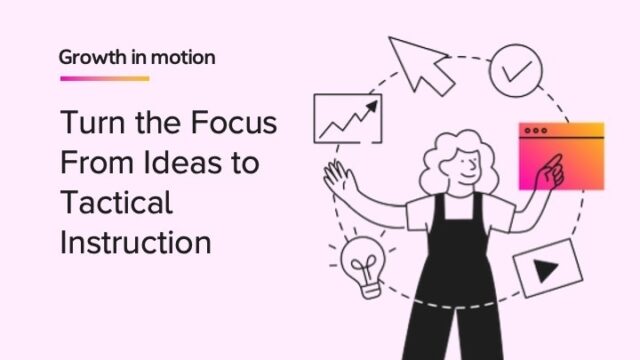
When setting up a classroom exercise or activity, you’re often required to arrange students into groups. Is it better to put them into heterogeneous groups, which comprise students of differing ability, or homogeneous groups, which comprise students of similar ability? This article offers a brief introduction to the advantages and disadvantages of homogeneous and heterogeneous groups to help you consider when you might choose one type of grouping over the other.
The disadvantages and benefits of heterogeneous grouping in the classroom
Disadvantages for approaching-grade level students
While some above-level students relish the opportunities and responsibilities of heterogeneous groups in the classroom, others may feel it’s holding them back. One researcher writes: “weaker students [have] a high tendency to become passive participants.”
Disadvantages for on- and approaching-grade level students
It’s not just approaching-grade level students who take a back seat in heterogeneous groups. On-grade level students can be just as prone to letting their more gifted classmates do all the work. This is especially the case if the more capable students have strong personalities, a focus on finishing the task as quickly as possible, or are dismissive of their peers’ abilities and contributions.
Benefits for approaching-grade level students
But let’s not overlook the benefits of heterogeneous grouping in the classroom, the first of which is the advantage they offer approaching-grade level students. In a mixed ability group, these students have the opportunity to follow the lead of their peers, who often hold more sway than the teacher. They might also feel more confident speaking up about their confusion with a smaller group of peers than they would in front of the whole class.
Benefits for on-grade level students
On-grade level students also benefit from being grouped with their above-level peers. Working closely with others can create kernels of knowledge that over time expand their understanding. In the same way, accelerated students can learn a thing or two from all of their group mates. All students come with unique perspectives and methods, capable of deepening others’ understanding of a subject.
Benefits for above-grade level students
Heterogeneous grouping in education can specifically benefit more above-grade level students by giving them an opportunity to assume a leadership role within their group. Students often understand their abilities compared to their classmates. Those who seem to know an exercise’s topic best naturally tend to guide their peers when asked to do so. In a best-case scenario, such students are empathetic to struggling classmates and do their best to help them along. Better still, there’s a chance they’ll know how to best communicate with another student and could find ways to convey information in a way they’ll understand. In any case, such groups are a great opportunity for talented students to develop soft skills like communication and leadership.
Benefits of homogeneous grouping in the classroom
Everyone at their own pace
There are times when it is more appropriate to group students homogeneously. One benefit of homogeneous grouping in education is that learners are placed in an environment where it’s easier to perform the task or exercise at their own pace. Surrounded by peers of roughly their own ability, a lesson can often become less stressful and more fun!
Scalable assignment difficulty
Another major benefit of homogeneous grouping is you, the teacher, are better able to adjust the difficulty of an assigned exercise according to each group’s ability. Let’s say, for the sake of simplicity, that you’ve split your class into three groups—A, B, and C—corresponding to students above, on, and approaching grade level. After setting out an exercise, you come to find that while it’s stimulating enough for group B, it’s too easy for group A and too difficult for group C.
With the homogeneous grouping of students, you can make the exercise more difficult for group A, adding elements that will challenge them so they get more out of it. For group C, you can give students a clearer path to progress. Better yet, with groups A and B occupied, you can devote more of your attention to group C. Whether it’s through a more challenging variation of the exercise or having more pieces fall into place after spending more time with you, homogeneous groups can enable every student to learn more.
Choosing between homogeneous and heterogeneous grouping
The type of grouping you choose in the classroom depends on the learning outcome of the exercise and what you’re trying to achieve. If you want to create an environment that nurtures struggling students especially and helps them develop independence and teamwork skills that come from less reliance on the teacher, a heterogeneous grouping of students is best. However, it’s important to think through how you can keep on- and approaching-grade-level students engaged in the lesson.
If it’s more important for students to take as much away from the actual exercise as possible, and you’re prepared to change the task parameters to make it more challenging or accessible, then homogeneous grouping in the classroom is the way to go. Chances are that you’ll have ample opportunity to use both grouping methods and see which one works best.
Whether or not you have a preference, it’s a great idea to switch between the two and see how your students respond. Doing so will allow you to get to know your students better. You’ll be able to observe how they respond in scenarios with different classmates and styles of grouping. It can be even more enlightening if you keep track of your observations so you can build on your experiences—do more of what worked well and cut back on what didn’t.
This article was adapted from a blog post initially developed by the education technology company Classcraft, which was acquired by HMH in 2023. The views expressed in this article are those of the author and do not necessarily represent those of HMH.
***
Find more lesson plans and classroom resources on Shaped.
Be the first to read the latest from HMH's blog, Shaped.













